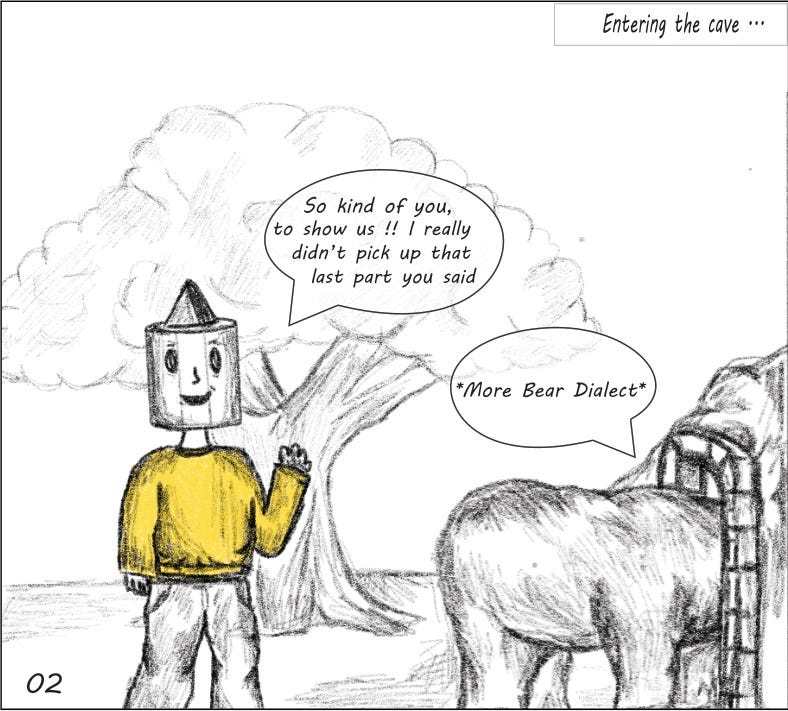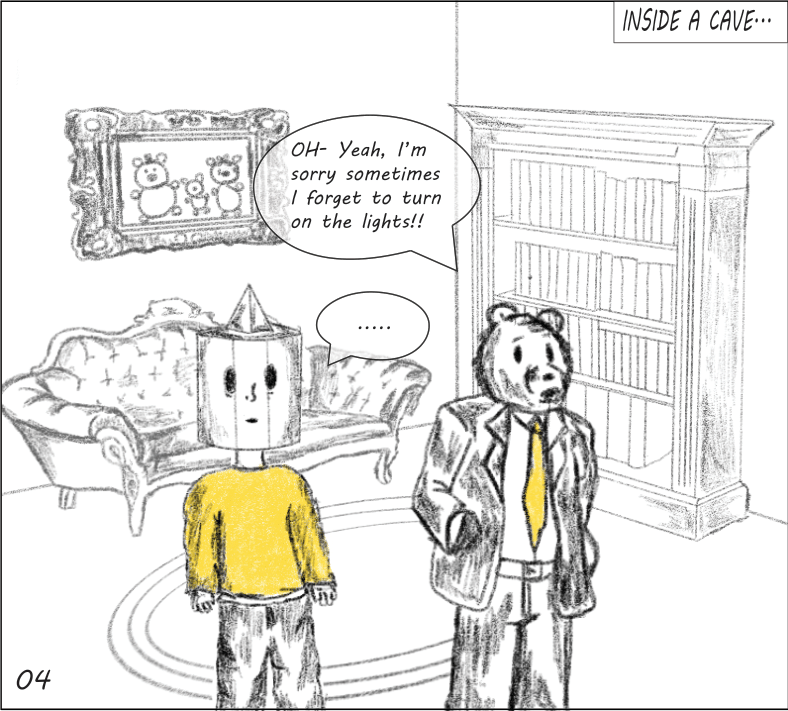Iteration_03: "Inclusionary Spaces"
Inclusionary Spaces
As we grow into ourselves, we look to those around us to shape who we become. It’s the people around us who show us what it means to be a person, and how we can exist in society. However, finding others who are like you becomes more difficult when society deems you as “incorrect” in some way. When you are queer, a person of color, a woman, gender non-conforming, or any intersection thereof.
Because of that difficulty in these communities, we wanted to document and celebrate the spaces where these people come together to find each other. What are the spaces where people can find others like them? How does finding that community help people understand themselves? And, perhaps most importantly for an architect, how can we design these spaces so that in the future people will never have to be without them?
Editor-In-Chief: Daniel Girgis
Issue Editor: William Totten
Graphic Designer: Shane Wintermute
Illustrator: Silvester Eduardo
Contributors: Jimenna Alcantar, Ky Havers, Aneri Patel, Jacob Swanson, William Totten
Cleckley Book Talk
Jacob Swanson
Elgin Cleckley began his April 5th lecture with a question for the audience soliciting recommendations for practical inclusive practices. In posing the question, Cleckley inverted the audience-presenter relationship with which the presentation would end, instigating a kind of subversive temporal circularity that became a major theme.
Quickly introducing the book that was the impetus for the talk, Empathic Design: Perspectives on Creating Inclusive Spaces which he edited, Cleckley presented his current work: creating architectural models of the Brookes slave ship; trying to understand the spatial and emotional implications of the long, cross-Atlantic middle passage on newly-enslaved people, packed together on their side for weeks on end with no ventilation or ability to move. The work had roots in his graduate thesis from 30 years ago documenting the then-current conditions of sites important to Black history in New York City and proposing a way to reintegrate that history into them. Following the poor reception of the project at his final review and heeding a central tenet of empathic design, the sankofa mindset, Cleckley only fully re-engaging those ideas a few years ago. Based on a word from the Akan tribe of Ghana, sankofa comes from a proverb that encourages learning from the past, reaching back to move forward.
Displaying the extensive set of models created from a set of drawings titled “Stowage of the British Slave Ship Brookes under the Regulated Slave Trade Act of 1788” as well as archival data of the ship’s voyages and cargo, he voiced an aspiration to make a full-scale exhibit version of the ship someday: boat tipped on its side, bodies replaced with “memory markers,” planes with folds representing hips and knees; abstraction employed not for dehumanization as in the drawing, but humanization, a similarly subversive inversion to the relational one that bookended the talk.
Sending the right Message
Ky Havers
I still remember one of the first times I passed as a young man over six years ago.
Unfortunately for me, it was in the women’s bathroom, in a senior home of all places, and one of the residents threatened to beat me with her walker (luckily she was very slow). Of course, these days I don’t really have to worry about that anymore, but I spent years of my life doing the best I could to avoid making a scene lest someone much faster than that first encounter decided to get violent, in situations where both choices seemed to end in failure. All of this over a space that us designers hardly even think about.
Granted, I get it, nobody wants to think too hard about public bathrooms. Us trans people don’t really want to give it that much brain space either. You’d probably be shocked to know just how much effort someone will put in to use a single occupant restroom (seriously, someone made a map of all of them on our campus).
And of course it isn’t just a small minority of people it benefits.
Something that will always stick with me is learning that my little cousin Matthew and his mother face many of the same issues I have. He’s disabled, and requires a caretaker (which so happens to be his mom), but as he’s gotten older they’ve discovered that they aren’t exactly welcome in most standard facilities either.
And then of course there’s other parents. Men’s bathrooms as they are don’t exactly come equipped with changing tables, which can make the already awkward situation of being a new parent even more so.
When you make even the smallest decisions about a public space, it sends a message. The important question is which one you want to send.
The Necessity of Inclusive Spaces
Aneri Patel
Women, people of color, and LGBTQ+ persons are among the marginalized communities for which inclusive places are vital, in building a sense of identity and belonging. These areas act as havens where people go to find comfort, empathy, and camaraderie in the face of a society that frequently ignores or marginalizes their experiences.
Finding these groups and getting involved in them may be life-changing for a lot of people. People can fully accept and express who they are in these settings without worrying about prejudice or judgment. Individuals might gain validation and confirmation by finding people who have experienced similar hardships and victories, which can aid in a deeper understanding and acceptance of oneself.
But the necessity of inclusive spaces calls attention to a serious problem in our society: prejudice and discrimination still exist. It is regrettably all too typical for you to feel ignored or marginalized because of your race. Feelings of alienation and otherness can be sustained by instances of overt racism or covert microaggressions that undermine one's sense of self-worth and belonging.
The institutionalization of discriminatory practices impedes the development of a more equitable society by reinforcing structural disparities and requiring information about ethnicity on applications or in biased AI algorithms.
To solve these problems, we must work together and be dedicated to tearing down oppressive structures. It entails not just constructing physical environments conducive to the growth of underprivileged communities but also pushing for structural change and dispelling deeply held Misconceptions.
Inclusionary spaces are more than simply physical buildings; they serve as a symbol of perseverance and hope in the face of hardship. We can strive toward a future where everyone, regardless of color, gender, or sexual orientation, feels respected, visible, and included by elevating various voices and experiences.
Shadow(s) of History
Jacob Swanson
Nina Cooke John’s 2023 monument to the venerable Underground Railroad conductor Harriet Tubman, Shadow of a Face, dominates Newark’s Harriet Tubman Square in a swirl of concrete, steel, and wooden slats. The monument was commissioned in 2020 to replace a statue of Christopher Columbus that was removed during that year’s Black Lives Matter protests. The square footprint of the statue’s plinth remains, inscribed on the ground in not-so-subtle contrast to the monument’s circular plan. Tubman’s face, rendered monumental in a tactile grey mosaic, magnetically pulls visitors across the park and into a protected interior space. On one side, a blue-tile mosaic illustrates community members’ reflections on the meaning of freedom and is one of the most powerful elements of the structure. Opposite, panels elucidate New Jersey’s history of activism towards Black liberation. Tubman’s abstract silhouette, veering closer to spidery than cloaked, towers above, a subtle (though not complete, given the sheer scale of Tubman’s face on the reverse side) separation of Tubman-the-myth from Tubman-the-person. Stay long enough and Queen Latifah’s disembodied voice will relate Tubman’s life story or Newark residents will share what Tubman means to them. In its overly literal interpretation of “giving voice” to the community, the audio element comes across as gimmicky. Together, it is not a monument that aspires to a heroic whole. Rather it is an assemblage that partially looks toward the social relationships it engenders for legitimation. It attempts to materialize them into an active mélange of past and present. Furthering that goal, the monument is a Grace Farms Design for Freedom project which guarantees the monument’s materials were produced without forced labor.
The memorial is an artifact of a movement that defined itself, in part, against a particular type of monumentality: the valorization of figures implicated in, and thus representations of, the historic violence against Black and indigenous people as above reproach. They argue that the truly inclusive society America strives to become must no longer center its story on problematic figures like Columbus or Robert E. Lee. At the same time, Cooke John rejects many of the methods and concerns of the late 20th century's response to the celebratory monument. Born out of social disillusionment following the Holocaust and a desire to mark the grief it wrought, these “anti-monuments” sought to complicate heroic narratives and the monument’s construction of cultural memory. Later, Maya Lin's Vietnam Memorial and MASS's National Memorial for Peace and Justice explored these approaches in an American context. With the Tubman memorial, Cooke John is not looking to negate monumentality. Rather, she wants to assert the story of Black liberation, of Harriet Tubman, as a quintessentially American story, braiding together Tubman's life story, her mythological status and a broader lineage of political-cultural struggle toward fulfilling the country's founding promise. It thus implicates us in the continuing struggle for liberation. By itself, the Tubman Memorial is a powerful testament to a truly democratic and inclusive society.
At the same time, in its effort to tell this story, it elides the specificity of the history it displaces. A 1927 gift from Newark’s Italian-American community, Columbus’s statue represented an expression of their own claim to Americanness as they fled poor treatment in Italy and following encounters with racialized violence in the United States. In the Tubman memorial, Columbus’s inscribed square reads more as a caricature of “oppression” than a serious engagement with what Columbus did and what his story means or meant, an unfortunate choice given its other attempts to pluralize meaning. As such, it creates the perception that there is only so much space for commemoration in the city, that public narratives and space must not be too complicated, that monuments can only sustain one type of meaning rather than complex or even contradictory ones. It thus (re)produces a monumentality that flattens history into a teleological symbol, more concerned with its own finality than engaging the layered meanings of its site.
I wonder what the monument would have looked like had Columbus’s plinth stayed, sans statue, as it stood from 2020 to 2022. If those blue-glazed tiles now hidden in the interior had instead been applied to its surface in an act of collective acknowledgement and resignification, transforming the staid marble whiteness into a cacophony of color and expression. If it had incorporated the perspectives of the indigenous peoples for whom Columbus’s arrival presaged cultural genocide. Or the Italian-American community for whom his statue represented an affirmation of their own belonging in the country. If it had accepted a more complicated, nuanced, and indeterminate understanding of its place in space and time in a restorative approach to monument-making; interpretively, rather than formally, dynamic. Perhaps then it might better prompt new ways of understanding our histories and what they mean to us and each other.
Bars in New Orleans
William Totten
Over the winter a handful of other students and I went to a convention for architecture students in New Orleans. During the convention I met two professional architects advertising their book Out in Architecture. I got talking with them about being gay in architecture school, and they invited me out for drinks at a local gay bar later that night to keep talking. I let everyone know where I was going, and, while everyone else went off to the clubs on Bourbon Street, I split off and went to the bar.
I had never been to a gay bar before, so walking over all I knew to expect were the scenes that I’d seen on social media. A cramped dark dancefloor with barely enough room to move. Instead, what I walked in to find was a well lit little hole in the wall tavern with Lady Gaga and other pop idols playing softly over the speakers.
It was comforting talking to all of them that night. I’m not a party person, so I had been dreading the thought of fighting for my space in the clubs that weekend. But instead I found a quiet conversation about what it means to be the type of person we all are. The dark and cramped spaces I was expecting were swapped for a bright and open bar floor. The standing and pushing were swapped for sitting at a table with enough elbow room. Instead of the hostile place I was expecting, I found a place where I can sit and enjoy the time I spent with the people I came there to meet.
Comic Strip
Jimenna Alcantar
Have a bone to pick with one of the reviews?
Want to write for Iteration_03?
Join our Discord!
Follow us on our Instagram!
Sponsor an Issue!









